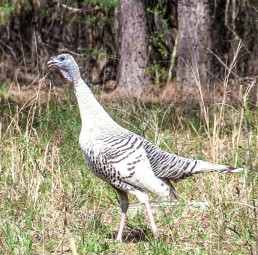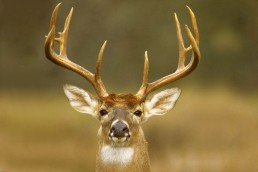Game Cameras: Game Changers for Gobbler Hunters
SHARE THIS POST
How trail game cameras can help your turkey scouting
If you haven’t scouted for turkeys yet, there’s still plenty of time, but don’t wait too long. Turkey season is just around the corner. You need to know where turkeys are and have some idea what’s on your hunting grounds. Early morning sits within hearing distance of roosting areas are traditional pre-season scouting tactics that work well. You hear gobbling, make notes, and go on about your day. But what about the rest of the day? That’s where trail game cameras can really help.
Most hunters own game cameras to scout deer and take them down after deer season. They forget about the cameras when it’s time to chase big toms. Now is prime time to break them out, put in a fresh set of batteries and scout turkeys. Turkey hunters know that undisturbed birds are easier to bag than educated ones. And there’s no better way to see what’s on your hunting property with minimal disturbance than by utilizing game cams.
Where to place them
An old logging road or trail in the middle of your hunting area is a top spot to place a game cam. Turkeys travel logging trails and use them to move from one area to another. Trails in open hardwoods, especially long straightaways, are places where toms love to strut. In thicker areas turkeys use trails, especially during rains. If you see numerous tracks, that will be the place to set your camera.
Long ridges are another excellent place to set a trail cam. Hens and gobblers naturally travel ridges, using them for their vantage to look out for dangers. Ridges can become strut zones for big toms—they fancy places where hens can see them display from a distance.
Look for areas with fresh turkey sign (scratchings, droppings, feathers, tracks) as go-to locations when setting game cams. As the old saying goes—where there’s smoke, there’s fire—if you find the sign, you’ll find the birds.
Pinch points are other good spots. Woods that narrow down to bottlenecks funnel turkeys and concentrate them into small areas. Wood lots between fields can be hangouts that bring birds in close quarters. Winding rivers and streams that create somewhat of an island also pack the birds into tight quarters. Use on-line maps and aerial views to look for spots that could funnel turkeys.
Edges of fields are ideal places for camera setups. Cut corn or bean fields, open grazing pastures, and freshly plowed fields or row crops attract turkeys. Set cameras on fence rows or timber edges looking out into fields where there’s sign present or if you’ve seen turkeys there before.
Are you enjoying this post?
You can be among the first to get the latest info on where to go, what to use and how to use it!
How to set it up
Turkeys aren’t as wary of game cams as deer tend to be, so hunters don’t have to worry about hiding them or making them inconspicuous. They can be set in wide open places without spooking birds. Actually, the more wide open, the better shots you’ll get.
The camera height needs to be lower than when setting up for deer. Usually two feet from the ground is perfect. It will also need to be aimed as parallel to the ground as possible, maximizing its effective range. If it’s in tight quarters, dropping the height to one foot and angling the trail cam slightly upwards will produce fantastic photos.
It gets awful cold out there. Read up on our tips for staying warm and limber when bowhunting in the winter.
When to check them
There’s really no right time or wrong time to check a game camera; just do it when there’s little risk of alerting turkeys to your presence. In my opinion, the absolute best time to check them is at dusk—right after fly-up time. I know some diehard turkey hunters who only check them at night.
Game cameras are a great tool to use scouting turkeys. They’re even good for postseason and will let you know what toms survived and how good the hatch is in the area.
Making the most of game cams helps you stay on top of what’s happening, and when, on your turkey-hunting grounds. You may be surprised at what you find and it’s sure to change the way you hunt.
MWO
SHARE THIS POST
Did you enjoy this post?
You can be among the first to get the latest info on where to go, what to use and how to use it!
Andy Douglas
Andy Douglas is an avid hunter, outdoor writer, and photographer. He has been chasing whitetails, big toms, bass, and most game that can be had for over 35 years. He lives the outdoor lifestyle and is passionate about sharing with others through stories and photos. Email him at AndyDouglas.Outdoors@yahoo.com



